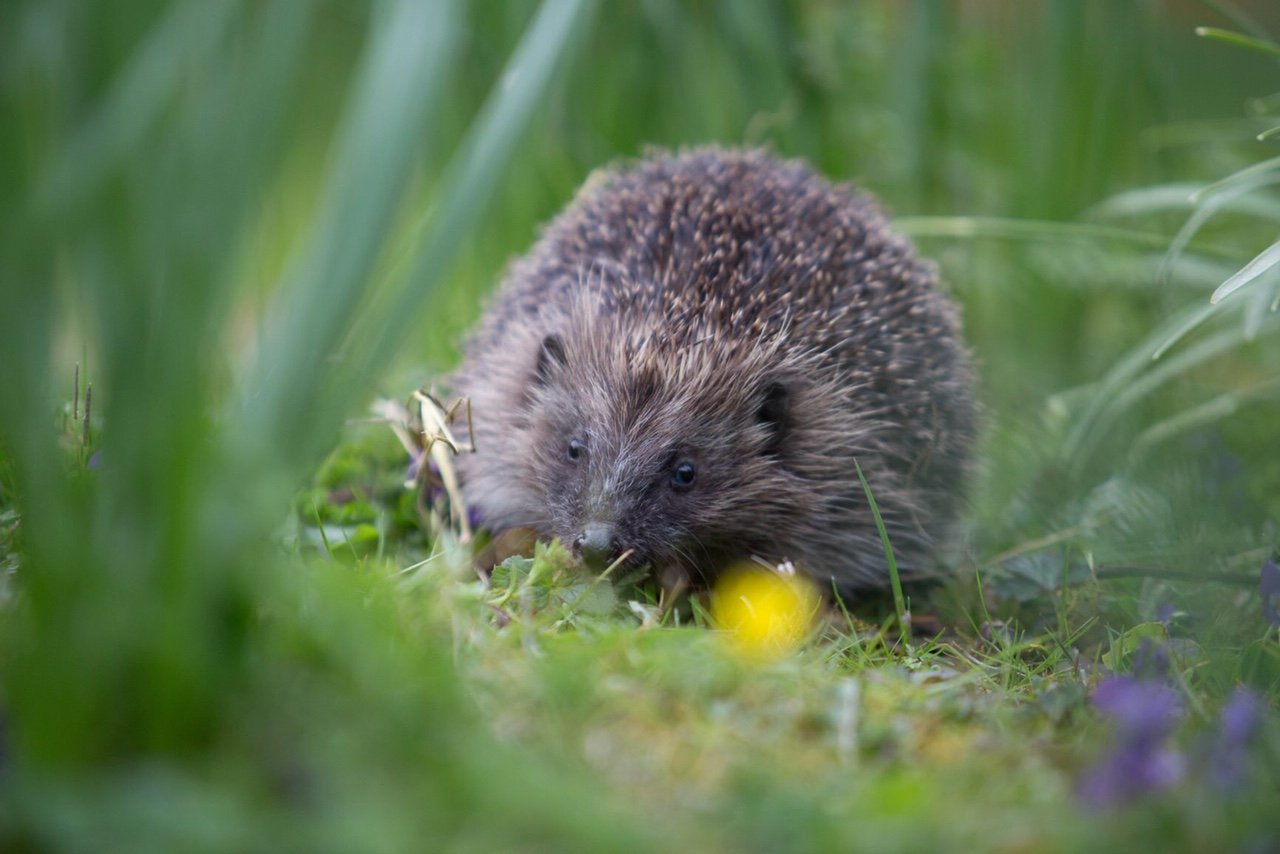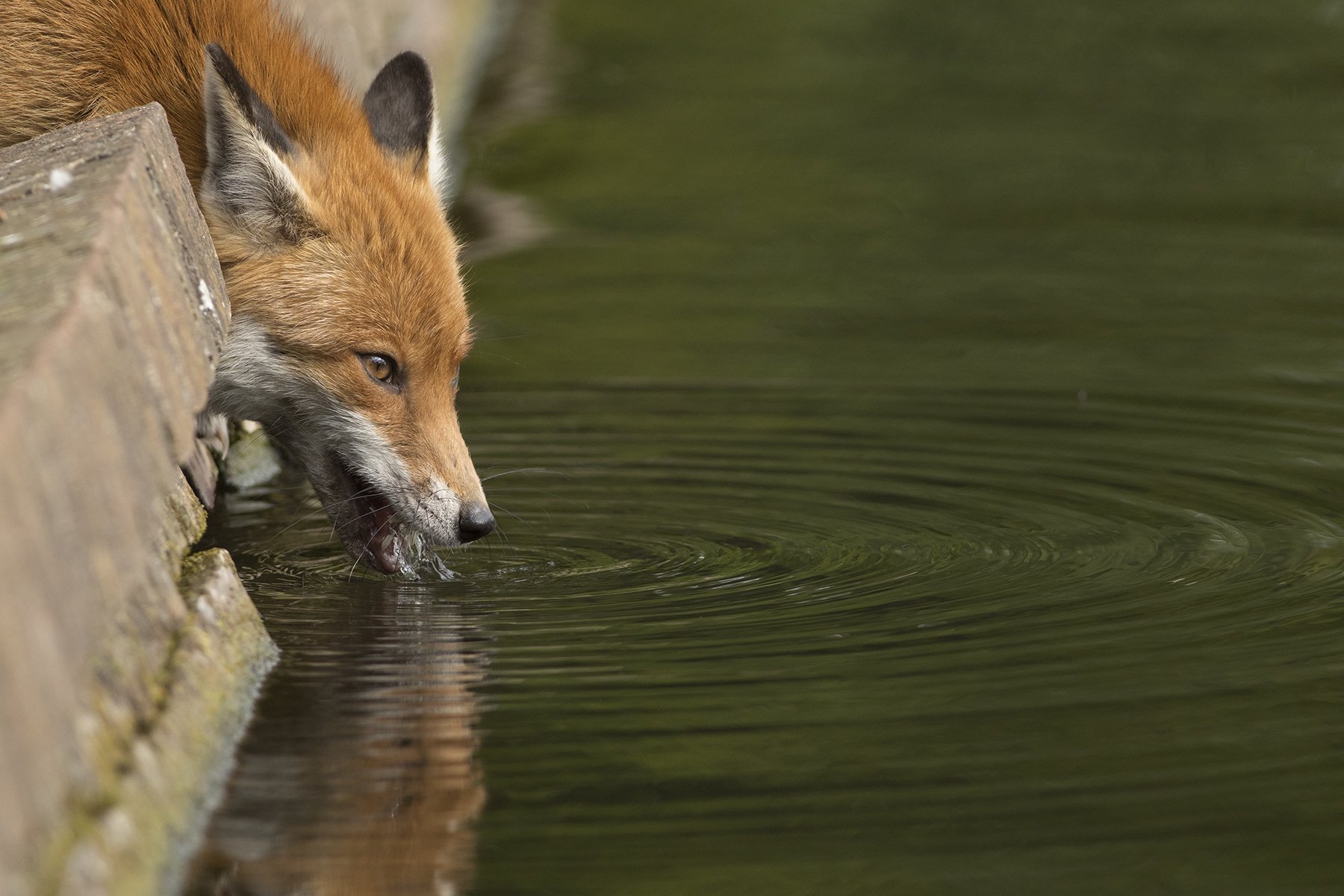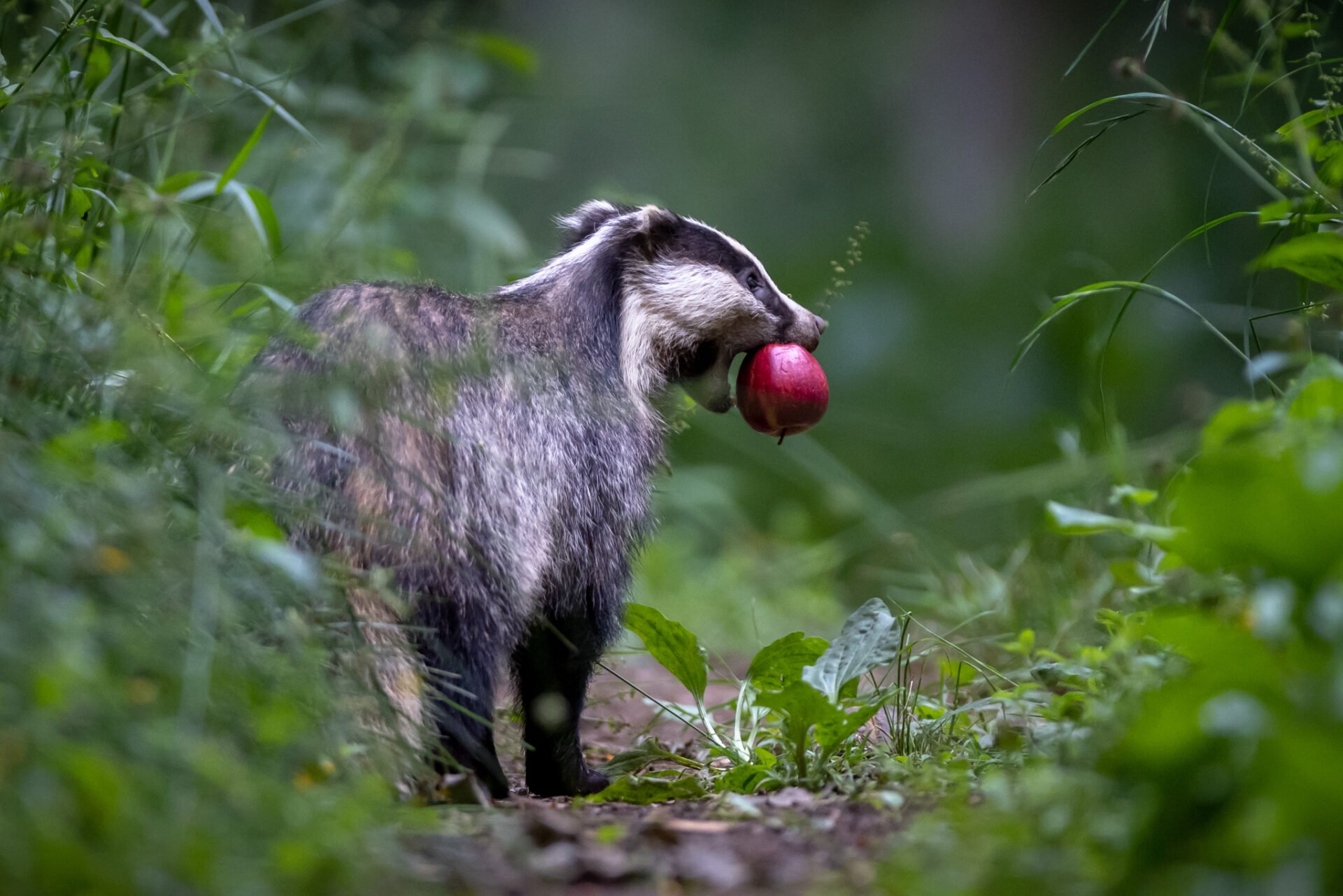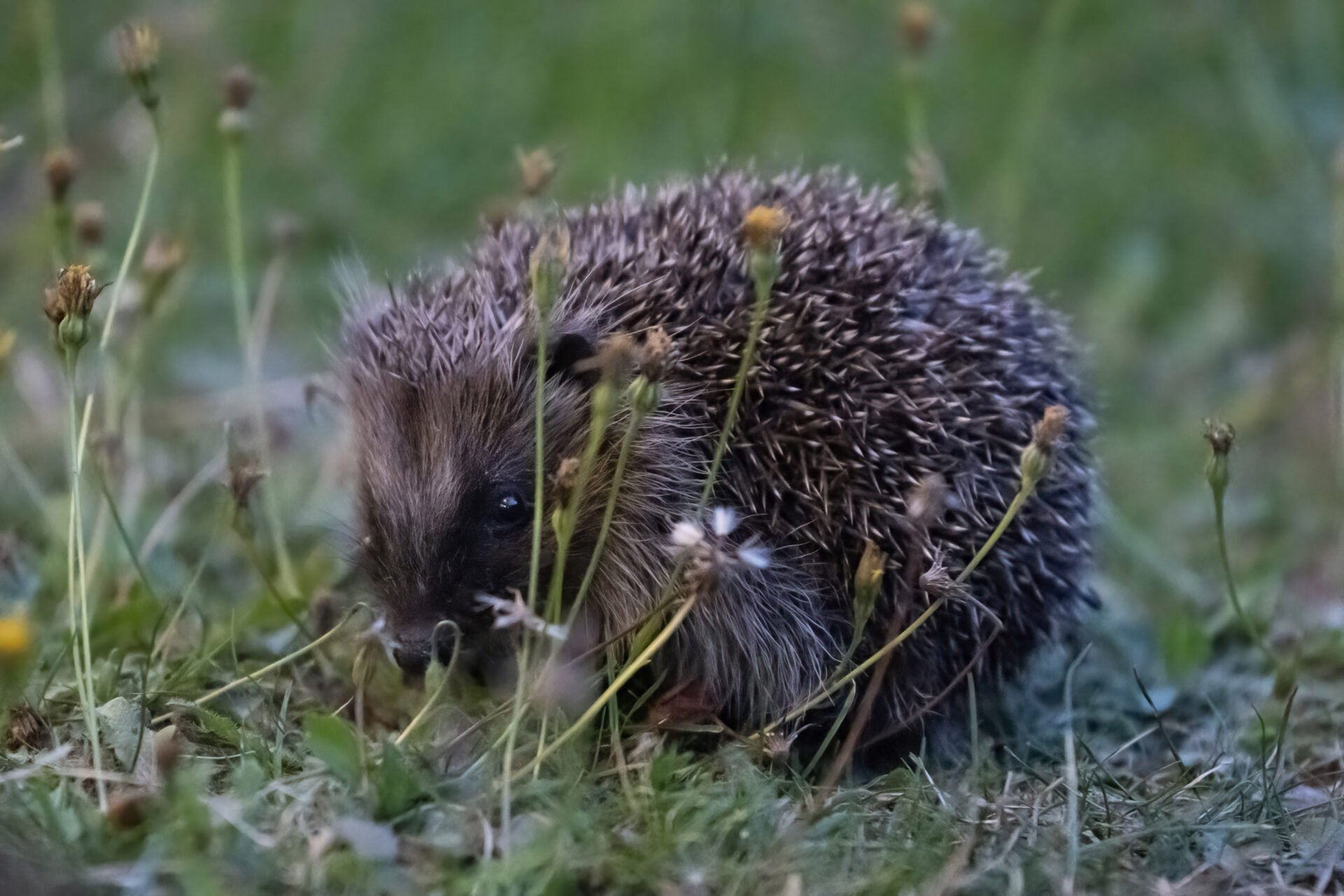Hedgehogs: predators and the truths behind their decline
The interactions between hedgehogs, badgers and foxes are essential processes in sustainable functioning Earth systems, wrongly portrayed as victims and demons, explains Elspeth Stirling.

When a friend drew my attention to an article pondering on the interactions between hedgehogs, badgers, and foxes in an earlier Mammal News, I found myself thinking about the bigger picture. Badger and fox numbers have been suppressed historically by centuries of persecution, which resulted in extirpation from many areas and suppressed numbers in remaining populations. As a consequence, we have deprived the land of the essential ecosystem functions these terrestrial ecosystem engineers until recently provided, including habitat creation for other creatures, seed dispersal, and nutrient cycling and moisture retention for soil health.
A multitude of species, including hedgehogs and many bird species, are vanishing in front of our eyes. Some blame badgers and foxes for the demise of hedgehogs and ground-nesting birds. But is this right, or are we just scapegoating ‘last soldier standing’ for the loss of his wild friends – when it’s we humans who are responsible?
Yet slaughter of foxes and badgers persists, hedgehogs are being extirpated locally, and over-exploitation of land systems continues, buoyed up by a stubborn belief that our present highly altered land practices are compatible with human life. But are we missing the essential point that a new approach is much needed if we are to revive the conditions that sustain life? That approach would prompt us to focus effort on rebooting natural processes and embracing species richness as a goal and give insight into the value of interactions over individual elements in a healthy system.1,2
Are badgers or foxes to blame for the catastrophic decline in hedgehog numbers?

As the British Hedgehog Preservation Society (BHPS) reports of 2015 and 2018 say: 3,4
‘The downward hedgehog trend is the same whether badgers are present or not.’
‘There is no indication that, where the two species coexist, badgers are causing the decrease in hedgehog numbers.’
‘The picture is a complex interaction of variables.’
The two species have evolved together and shared habitat since time began, so the recent crash in hedgehog numbers needs another explanation.5
So, do badgers and/or foxes kill hedgehogs?

Hedgehogs and badgers eat mainly the same prey items – macroinvertebrates (e.g. earthworms, beetles, insect larvae) and small vertebrates when available seasonally (e.g. the young of rodents, amphibians, and bird eggs). Badgers are opportunistic omnivores, gleaners of small, relatively immobile items which they detect as they travel along ancestral paths, nose to the ground, poised to snuffle.6 However, recent human land management practices such as vegetation clearances, persistent applications of insecticides and herbicides, deep ploughing, and agrichemicals used to grow crops year round means food items are significantly depleted, and nature can no longer provide a nutritious larder for all wildlife for all seasons.
The story with foxes is similar. Foxes’ preferred diet comprises mainly small rodents, rabbits and birds/eggs present in their territory. However recent human practices have significantly reduced these small prey species from the land, meaning that foxes must gain their nutrition from what is available within their territory. Due to this lack of food, fox territories are large in the countryside but very small in towns, where there is greater food availability.
Destruction of habitat removes opportunities for safe nesting for hedgehogs, and also restricts available hibernation areas, which limits opportunities for hedgehogs to overwinter. Widespread use of insecticides and herbicides catastrophically reduces insect populations for food.7,8
It would be no surprise if increasing numbers of hedgehogs emerge from hibernation in a weakened state because of increasing exposure to disturbance, or are already carrion by the time winter closes. Hedgehog emergence from hibernation coincides with the lean period when larger mammals find scant availability of their preferred prey items. Hedgehogs that survive may not have the resilience and reserves necessary to rear their young successfully.
Orphan hedgehogs reared by even the most skilful human rehabilitators may be less resilient than hedgehogs reared by wild hedgehogs. The altered environment into which they are released lacks an experienced mature hedgehog population.
In conclusion this means that a fox or badger may be a factor in a fraction of hedgehog deaths but even then, not necessarily the significant factor.
Would fewer badgers and foxes mean more hedgehogs would ‘bounce back’?

No, it’s not as simple as that. The removal of entire populations of badgers from large swathes of England in recent years was shown to have no influence on the numbers of ground-nesting birds or brood success in species such as skylark and lapwing.9 And it seems likely the situation is similar for hedgehogs. For millennia, when there were more hedgehogs, some small fraction of the population would have been eaten by badgers and potentially foxes although seasonally and not in sufficient numbers to influence the outcome for the species. How do we account for fact that the decline in hedgehogs is most rapid in areas that have few or no badgers?5
Fast forward to now, we have multiple species all competing for the same vanishing resources in a deeply altered natural environment – all living in pockets of land too tiny to support life and exposed to increasing disturbance from human activities (footfall, dogs, development, roads, chemicals, pollution, floods and fires).7 The available evidence indicates that it is human practices that influence the outcomes for individual hedgehogs and hence if we want to improve the outcomes for the species it is human practices we need to concentrate on.
If you look at farming websites you find that foxes and badgers are the most frequently mentioned factor in opinions about lamb losses, despite field and forensic studies spanning the last 40 years consistently demonstrating that in under 2% of lamb deaths a wild predator may be a contributing factor (although not necessarily the significant factor).10,11,12
Some call for DNA testing. However, DNA left on a lamb or hedgehog could only identify if a wild mammal had interacted with it, not what caused the death. Foxes, badgers, hedgehogs, farmed animals and gamebirds all share the same places in our increasingly over-stocked countryside and will have many opportunities to transfer DNA.
Many other factors reduce hedgehog numbers
Widespread use of herbicides and insecticides in agriculture, gardens and parks destroys insect habitats and has lethal and sub-lethal harmful effects on insects and larvae.3,4,7 Studies have demonstrated that insect populations, that are a vital component of the hedgehog diet, have suffered sharp declines in the past two decades.8 Toxic load from the compound impact of herbicides, insecticides and fungicides may accumulate in hedgehogs when they consume insects.7
Habitat loss and fragmentation – removal of hedgerows, field margins and scrub result in fewer nesting sites and less protection for hedgehogs.3,4 Nowhere in Britain is there remaining extensive connected natural woodland and grassland, and contrary to expectations, Scotland is one of the most deforested countries in Europe.13 Hedgehogs require large, connected territories to find sufficient wild prey items to support life.
Roads and traffic – estimates indicate that over 167,000 hedgehogs are killed annually in Great Britain, and it is ‘unlikely that this level of mortality is sustainable’.14
On top of all these human-induced stressors, hedgehogs are also suffering from climate-heating-induced floods, droughts and fire.
Any one of these factors alone could kill a hedgehog. However, it is likely that most hedgehog deaths in our present highly altered environments are associated with more than one of these factors.
The conditions hedgehogs rely on for life are vanishing and it’s down to human practices.
It’s a tragedy when a hedgehog dies – but they’re the victims of land management practices that push wildlife aside. People have killed foxes, badgers and small wild mammals for centuries, although this has failed to achieve any lasting improvements in the perceived harms. If the problem is that the remnant hedgehog population is at a tipping point, then the approach is to focus on reviving the natural conditions that will support their revival and maintain the population naturally without requiring artificial inputs.
References:
-
Hill, S.L., Gonzalez, R., Sanchez-Ortiz, K., Caton, E., Espinoza, F., Newbold, T., Tylianakis, J., Scharlemann, J.P., De Palma, A. and Purvis, A. (2018). Worldwide impacts of past and projected future land-use change on local species richness and the Biodiversity Intactness Index. BioRxiv, p.311787
-
Jepson, P & C. Blythe (2021). Rewilding. The radical new science of ecological recovery. Icon Books
-
Wembridge, D. & Langton, S. The State of Britain’s Hedgehogs 2015. British Hedgehog Preservation Society and People’s Trust for Endangered Species http://www.britishhedgehogs.org.uk/pdf/SoBH_2015.pdf
-
Wilson, E & Wembridge, D. The State of Britain’s Hedgehogs 2018. British Hedgehog Preservation Society and People’s Trust for Endangered Species https://www.britishhedgehogs.org.uk/pdf/sobh-2018.pdf
-
Warwick, H. (2014). Should we cull our badgers to save our hedgehogs? Ecologist, 24 April. https://theecologist.org/2014/apr/24/should-we-cull-our-badgers-save-our-hedgehogs
-
Roper, T. (2010). Badger. Collins New Naturalist Library, London.
-
Goulson, D. (2021). Silent Earth. Averting the Insect Apocalypse. Jonathan Cape, London.
-
Hallmann, C.A., Sorg, M., Jongejan,s E., Siepel, H., Hofland N, Schwan, H., et al. (2017). More than 75 percent decline over 27 years in total flying insect biomass in protected areas. PLoS ONE 12(10): e0185809.
-
Kettel, Esther F., Ivan Lakin, Matthew J. Heydon & Gavin M. Siriwardena (2020). A comparison of breeding bird populations inside and outside of European Badger Meles meles control areas, Bird Study, 67:3, 279-291. https://www.tandfonline.com/doi/full/10.1080/00063657.2021.1889460
-
Dwyer, C. M., J. Conington, F. Corbiere, I.H. Holmøy, K. Muri, R. Nowak, J. Rooke, J. Vipond, J.-M. Gautier (2016). Invited review: Improving neonatal survival in small ruminants: science into practice, Animal, 10(3). https://doi.org/10.1017/S1751731115001974
-
Wiener, G., Woolliams, C. & Macleod, N. (2009). The effects of breed, breeding system and other factors on lamb mortality: 1. Causes of death and effects on the incidence of losses. The Journal of Agricultural Science, 100(3), 539-551. https://www.cambridge.org/core/journals/journal-of-agricultural-science/article/abs/effects-of-breed-breeding-system-and-other-factors-on-lamb-mortality-1-causes-of-death-and-effects-on-the-incidence-of-losses/74BAF995A9B5BAC0B0D89EC73D551CE8
-
Jacobson, Caroline, M. Bruce, P.R. Kenyon, A. Lockwood, D. Miller, G. Refshauge, D. G. Masters (2020). A review of dystocia in sheep. Small Ruminant Research, 192 (November), 106209. https://doi.org/10.1016/j.smallrumres.2020.106209
-
State of Nature Scotland Report https://www.nature.scot/sites/default/files/2019-10/State-of-nature-Report-2019-Scotland-full-report.pdf
-
Wembridge, D.E., Newman, M.R., Bright, P.W. & Morris, P.A. (2016). An estimate of the annual number of hedgehog (Erinaceus europaeus) road casualties in Great Britain. Mammal Communications 2: 8-14.
Our Fact Sheets have recently been published on our website in order to provide science-based information to assist people in myth-busting about badgers. https://www.scottishbadgers.org.uk/infographics/
-
